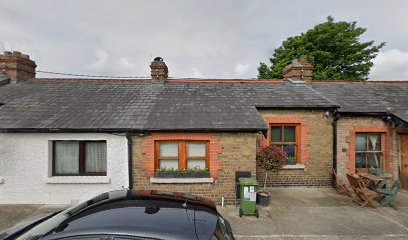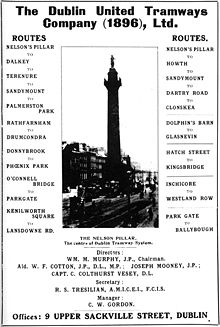The Terrace
Tramway Terrace aka Tramway Cottages aka Highfield Grove
Recently I was (again) looking at the 1911 Census. I spent a bit of time looking at the entries for what is now Highfield Grove in Rathgar, which is where I grew up. The houses appear to have been built sometime in the early 1900s. The road does not appear on the 1901 Census or on any maps from that time.
A litttle bit of research told me that originally there was just the row of houses from number 1 to number 12. This was called Tramway Terrace. Many years later my family were to move into No.10 A few years after the first houses were built the additional two rows were constructed around the triangular green that's still there today. The name was then changed to Tramway Cottages as it was no longer a 'terrace'. Although my parents often refered to the house as 'the terrace' so that's where that came from presumably.
The original cottages were very small approx. 560 sq feet. There was a living room, two bedrooms to the side of this, a parlour type small kitchen at the back. There were three fireplaces. There would have been no bath or inside toilet. There was an outside toilet in the yard.
There are a few roads with similar cottages in Dublin. All built for the workers of the Dublin United Tramways Company (DUTC). To name a few there are some in Terenure Village, in Sandymount and in Phibsboro.
DUTC was formed by William Martin Murphy with the amalgamation of a few smaller tram companies who all came together under this name. The trams started around 1872 and at their peak served an area of about 60 miles. They served the suburbs and Howth. There was also an 'excursion' tram which ran trips to Poulaphouca Falls. Or 'Pollawocka' as one of my late Uncles called it.
Workers of the DUTC were central to the Lockout of 1913 when William Murphy would not allow some members join the Irish Transport and General Workers Union. The cottages in Rathgar were built for workers of the number 14 tram which served Dartry Tram station. In later years the bus that served the area was also the 14. The route started in 1905 and with a few variations eventually ran from Nelson's Pillar via Clonskeagh, to Dartry Road station.
Many years later I ended up working in the Tram station which had been convered to modern offices for a company of Consulting Engineers. The building is called Tramway House. The very last tram ran in the year that I was born. Tramway House was the closest I got to them.
A funny fact I came across was that seemingly the original trams had open sides on the upstairs. There was uproar over this because if a lady sat upstairs there was a chance her ankles could be seen. So hence the sides were put onto the top of the trams and soon became an opportunity to sell advertising.
Dublin tramways - Wikipedia (for more info)
Looking at the inhabitants in the 'Cottages' in 1911 is very interesting. The road was new of course. There appear to be a lot of young couples, just starting off married life. Their occupations are listed as tram driver, tram condutor, mechanic, inspector etc. There are several families where it is apparent that the husband had been widowed and remarried a younger woman! For instance in No. 10 there was a family called Keogh. His occupation is listed as a mechanic. In 1911 he is aged 44 and his wife is 26. There are two older children aged 13 and 12 so obviously from a previous marriage. There are three other children aged 4, 1 and 0.
The bigger houses (there are four of them ) were built for senior workers in the Tram Company. In one of them, number 21 there are 13 people listed as living in the house at the time of the 1911 Census. But as I said a lot of the houses had no children at that stage. There are 65 children listed. In 28 houses, that's not a high ratio for those days. This was all to change later in the 40s 50s and 60s when families with large numbers of children were reared in two bedrooms with no bathroom. Not that it was unusal for the time but certainly not what people think of when they think of living in Rathgar.
Today of course, the houses have been extended up out and even down. There would be no houses now in the original state. In fact a quick peep at Google maps shows the extent of the various extensions on the houses.
Looking over the Census there are a few family names that have lasted the years. I recognised a few of them from my time living there until 1981. A couple of the houses still have a family member living in the house. In fact one of the larger houses was on the market last year and the newspaper advert stated that the house was being sold after being in the same family for over 100 years. The asking price was almost three quarters of a million Euro and it needed work. It would be interesting to find out how much they cost to build or buy back in the day.
During the 1940s buses became popular and it is said that the buses used to 'pass out' the trams to get to the passengers first. Buses were also faster, could reach more routes and were considered cheaper to run at the time. The last Dublin tram ran in 1949 and the last tram to Howth in 1959.
The Tram Company offered the houses for sale to the residents in the 1940s. I doubt that all of the families could have afforded to buy their home. I wonder where they went.
At that stage Dublin Corporation took over the roads and lighting and the name was changed to Highfield Grove.


